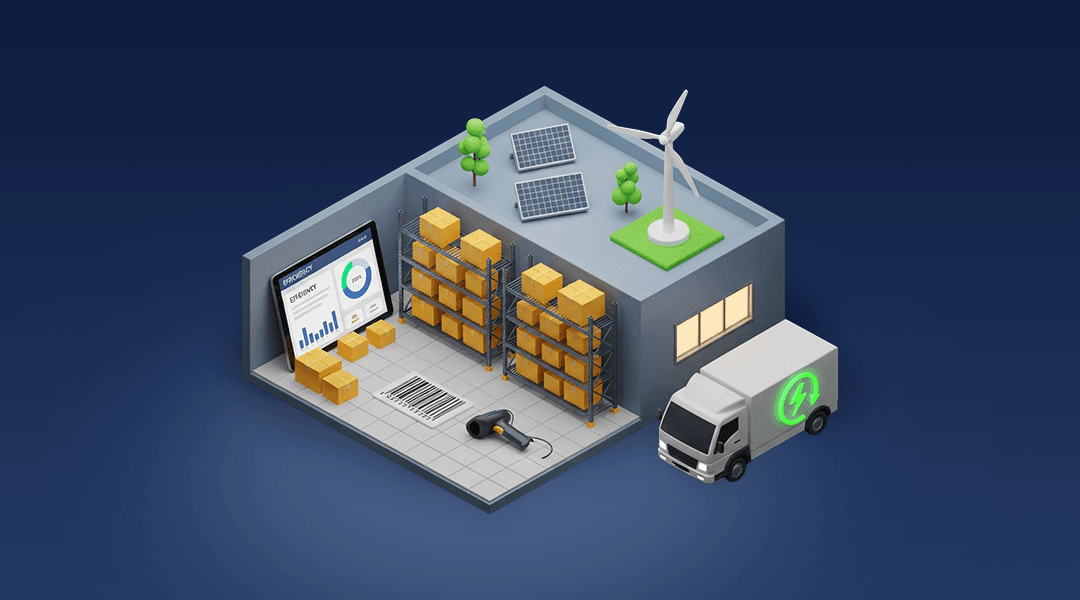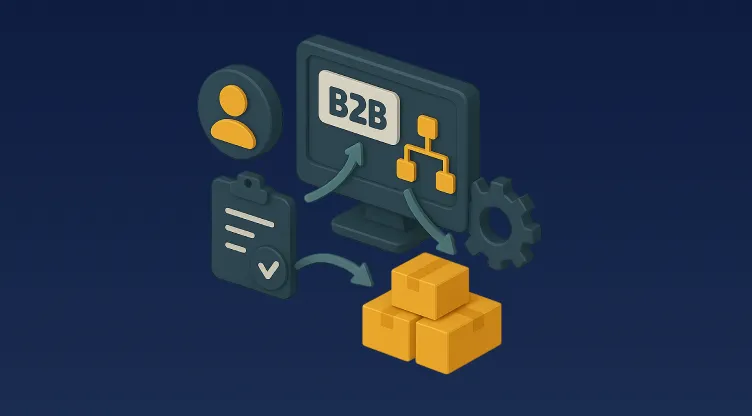Smart Shipping at Scale: How TMS Systems Unlock Cost-Efficient Bulk & Pallet-Level Logistics

Table of Contents
Quick Byte: Why This Matters in MENA Logistics
- Pallet-level consolidation reduces waste and delivery times.
- TMS platforms offer route optimisation and load balancing tools.
- Reverse logistics becomes less costly when integrated into bulk operations.
- Bulk shipments lower per-unit delivery costs across first, middle, and last-mile.
- Smart planning and digital automation can save 20–30% in freight expenses.
Introduction: Why Bulk Shipments Need a Smarter Game Plan
The MENA region’s booming e-commerce and retail sectors are generating a tidal wave of goods flowing across complex supply chains. From Riyadh to Cairo, brands are scaling operations to meet growing demands. Bulk shipments—especially those moved on pallets—are a backbone of this scale-up journey. But without intelligent management, they become bottlenecks rather than enablers.
This is where a Transportation Management System (TMS) steps in. A robust TMS platform makes pallet-level consolidation smarter, not harder. It does this by automating trip planning, optimising capacity, and integrating reverse logistics. For any business managing frequent, large-scale movements, this spells massive cost savings and better service levels.
This article breaks down how you can use a TMS system to streamline bulk shipment operations, slash costs, and gain better control from warehouse to delivery.
Understanding TMS and Its Role in Bulk Shipments
A Transportation Management System helps logistics teams plan, execute, and optimise shipment processes. When tailored for bulk shipping and pallet-level handling, a TMS enables:
- Trip clustering across routes with similar destinations
- Real-time visibility into vehicle load capacity
- On-demand consolidation for last-minute orders
- Integration with warehouse and order systems for seamless operations
In markets like Saudi Arabia, UAE, and Egypt, where city logistics and long-haul cross-border transport coexist, these capabilities help businesses scale without complexity.
Want to know how your TMS integrates across your operations? Explore Omniful's TMS system.
Challenges in Bulk & Pallet-Level Shipments Without TMS
Bulk logistics face recurring problems that often go unchecked:
1. Underutilised Vehicle Capacity
Manual load planning can result in half-empty trucks. This inflates cost-per-shipment.
2. Fragmented Route Planning
Without automation, trip scheduling may ignore optimal cluster-based delivery, adding extra miles and hours.
3. Disconnected Order Systems
When order data lives in silos, consolidating based on SKUs, weight, or volume becomes difficult.
4. Weak Reverse Logistics Strategy
Returned items travel separately from outgoing goods, doubling delivery costs and labour.
5. Poor Visibility
Without real-time tracking, fleet performance and delivery SLAs suffer, especially in high-traffic urban areas like Dubai or Jeddah.
A Transportation Management System resolves each of these bottlenecks, especially when it's designed for bulk imports, pallet shipping, and reverse logistics.
How TMS Transforms Bulk Shipping Efficiency
A feature-rich TMS like Omniful offers several benefits tailored to bulk logistics:
Automated Trip Clustering
TMS software groups deliveries going to nearby zones into a single trip. This reduces fuel usage, driver hours, and turnaround times.
Example:
A Riyadh-based distributor consolidates 35 pallet deliveries into 10 optimised trips instead of 25 individual dispatches, reducing total kilometres by 40%.
Capacity & Load Optimisation
TMS tracks vehicle size, load weight, and available space. It automatically fits as many pallets as possible without breaching safety limits.
Integrated Reverse Logistics
Returned goods (damaged, wrong delivery, expired) are synced with outbound trips using mark-for-return tags. This saves cost and avoids empty backhauls.
Explore more on Returns Management.
Route Planning with AI
Advanced TMS platforms use AI-powered route planning to consider traffic patterns, delivery windows, and fuel prices. For long-haul shipments across GCC borders, this can mean significant cost and time savings.
Bulk Import and Dispatch Automation
Manually handling thousands of records is a recipe for errors. TMS tools offer CSV import and OMS integrations to automate shipment creation and trip scheduling in bulk.
Explore Order Management System and how it connects with TMS.
The Power of Pallet-Level Consolidation
While bulk shipping often implies “more of everything,” it’s the smart bundling at the pallet level that truly delivers value.
Pallet-level consolidation is the art of grouping multiple shipments or SKUs on a single pallet to:
- Minimise floor space usage in vehicles
- Reduce handling time at delivery points
- Simplify loading/unloading
- Decrease damages due to less movement
With a TMS, you can set automated rules such as:
- All items for a region or customer go on one pallet
- Separate fragile and heavy items using SKUs
- Consolidate orders only if delivery windows match
Such micro-rules help achieve macro-efficiencies across the network.
Reverse Logistics in Bulk Operations
Reverse logistics gets expensive—fast. When managed manually, it typically involves:
- Separate trips
- Duplicate tracking and invoicing
- Extra labour costs
But integrated TMS systems like Omniful include reverse flows as part of the same delivery network. Features like “mark package for return to origin” allow businesses to:
- Club return items with outgoing deliveries
- Use reverse flows for warranty claims or product exchanges
- Handle returns from doorstep or hub locations
This unified approach improves cash flow and reduces time to restock.
Industry Example: Riyadh-Based Retailer Scaling Nationwide
Let’s consider a large homeware brand operating across Saudi Arabia. With 30 stores and a central warehouse, they regularly ship:
- 50+ pallets a day
- Orders to stores, customers, and B2B partners
- In-house fleet across three zones
Without TMS:
- Route changes are reactive
- Orders are manually loaded into trucks
- Returns are delayed or misplaced
With TMS:
- Pallets are assigned by zone and store
- Routes auto-generate by order clusters
- Returns are picked during delivery rounds
- Delivery accuracy jumps by 25%
- Freight cost per unit drops by 18%
Connecting the Dots: How a TMS Complements Your Ecosystem
A TMS doesn’t work in isolation. It connects with:
- Warehouse Management Systems for real-time stock updates
- Order Management to automate fulfilment triggers
- Shipping Gateways to generate AWBs
- Inventory Management Systems to track item movement
Each layer brings data, and together, they enable smarter decisions from procurement to doorstep delivery.
Strategies for MENA-Based Operations
In the MENA region, bulk shipments often span across wide geographies and customs zones. To maximise savings:
- Use region-specific delivery zones in TMS to optimise cross-border flows.
- Apply fleet segmentation (by type and payload) for first-mile, mid-mile, and last-mile efficiency.
- Leverage hyperlocal hubs for faster re-shipping and reverse pickups.
- Partner with multiple carriers and integrate them using Omniship to compare rates and SLAs.
FAQs: TMS & Bulk Shipments
How does a TMS help reduce shipping costs?
It optimises route planning, pallet consolidation, and vehicle usage to lower per-unit freight costs.
Can I use a TMS for reverse logistics too?
Yes. Integrated TMS platforms support returns during delivery and automate trip scheduling for reverse flows.
What if I use multiple carriers?
A good TMS connects with several providers and chooses the best based on rules like cost, speed, or SLA compliance.
Is pallet-level consolidation possible with TMS automation?
Yes. TMS rules help create automated logic to group items into pallets by region, SKU, customer, or time slots.
Wrapping Up: A TMS is Not Just a Tool, It’s a Strategy
In today’s logistics game, it’s not just about moving goods—it’s about moving smarter. Businesses across MENA that manage bulk shipments and reverse logistics can no longer afford manual inefficiencies. A Transportation Management System becomes the core of a cost-saving, scalable, and intelligent supply chain.
Whether you're shipping hundreds of pallets daily or managing complex returns across borders, a modern TMS is your key to unlocking operational efficiency.
Ready to Scale Smarter?
Explore how Omniful can help you streamline bulk shipping, consolidate pallets efficiently, and reduce logistics costs.























